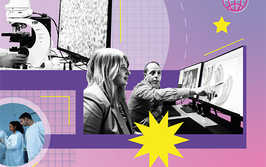
Know Your Strength
Women tackle gender-specific career issues in pathology and lab medicine
In many respects, laboratory medicine is a trailblazing field. Not least among its achievements is an unusually welcoming environment for women, who now outnumber men as new practitioners in the field (1). However, does the influx of women into one of many traditionally male-dominated fields signal that all is well? Unfortunately, not by a long shot.
Despite equivalent relative value units (RVUs, a measure of the value of physician services), there are still fewer women than men in senior academic and clinical positions. And among those who do make it to the top, the pay gap between women and men is actually increasing (2). So why, in an apparently enlightened age of equality, do these differences still exist? And what other unique issues do women in pathology and laboratory medicine face?
Hoping to gain some insight, we asked you to share your questions about women’s career issues in the field. The answers come from an international panel of women – all of whom are navigating highly successful careers in various laboratory medical disciplines.
Elizabeth Montgomery is Professor of Pathology, Oncology and Orthopedic Surgery at Johns Hopkins School of Medicine in Baltimore, USA.
Suzy Lishman, CBE, is Consultant Histopathologist at North West Anglia NHS Foundation Trust, UK, and immediate past president of the UK’s Royal College of Pathologists.
Marilyn Bui is President of the Digital Pathology Association; she is also President of Medical Staff, a Senior Member of the Department of Anatomic Pathology & Sarcoma, Section Head of Bone and Soft Tissue Pathology, and Scientific Director of the Analytic Microscopy Core at Moffitt Cancer Center, Tampa, USA.
Debra Graves is Chief Executive Officer of the Royal College of Pathologists of Australasia, Fellow of the Royal Australasian College of Medical Administrators, and Fellow of the Australian Institute of Company Directors.
Sherrie Perkins is Chief Executive Officer of ARUP Laboratories and Professor of Pathology at the University of Utah School of Medicine, Salt Lake City, USA.
Diana Kremitske is Vice President, Operations, Diagnostic Medicine at Geisinger Health System, Danville, USA.

As a woman, what is your biggest challenge?
Luis Humberto Cruz Contreras (@luishcruzc)
EM: The challenges I face are the same as those faced by men: meeting deadlines, doing the best I can with an overwhelming academic schedule, handling my clinical duties well, and keeping my temper in check when there is a lot going on. Of course, I am constantly treated as a secretary – when I answer the phone, I am always mistaken for one and asked to provide secretarial services. This is annoying, wastes time, and does not happen to my male colleagues – but it is inconsequential. I am also still subjected to moronic explanations of topics about which I am quite knowledgeable, which is tiresome but – again – inconsequential. When my children were small, things were different; then, my biggest challenge was the chronic, debilitating exhaustion of dealing with work, the needs of the children, and domestic chores.
SL: I think women are often underestimated in the workplace, so the biggest challenge is getting the opportunity to demonstrate what you can do. Once you’ve shown how capable you are, people are likely to ask you to do more.
MB: You have to know and believe you are good enough. When that happens, you no longer seek approval from others to feel confident. It is in our nature to think from our hearts. Be compassionate and sympathetic, but keep a cool head when dealing with the root of the problem. When building a supportive network, choose strategic partners who will help you reach your full potential.
SP: My biggest challenge was always in striking an appropriate work-life balance while maintaining the respect of my colleagues – many of whom had non-working spouses. It was often hard for me to clearly articulate the value I brought and make the request for appropriate recognition or pay.
Studies show that the odds are often stacked against us for achieving equal promotion, equal pay, and equal respect. What are some tips for success in leadership roles?
Dana Razzano (@Dr_DR_Cells)
EM: Sadly, the reality remains that women have to work harder and be better to get the same recognition as men – and this is not always easy. This construct is slowly changing, but it will take a few more generations. When I began medical school in 1980, there were substantially more men in training than women. It struck me, as a junior attending reading pathology journals, that the few women on the editorial boards were all heavy hitters like Sharon Weiss and Elaine Jaffee. Many of the men, on the other hand, were unknown junior colleagues of the editor (always a man). I do not think that the editors of these journals were trying to be sexist; they simply felt more comfortable promoting junior male colleagues than female ones.
It has been wonderful to see editorial boards fill with women, but there are still few female journal editors – not least because the job is fun and the men in those roles have yet to retire! New searches, however, currently favor men. Some series, however, do have gender parity. For instance, I am the Editor in Chief of the new series of the Armed Forces Institute of Pathology (AFIP) Fascicles, published by the American Registry of Pathology – and there is also a new series of Wolters Kluwer books that I co-edit with Christina Arnold and Dora Lam-Himlin.
In 2019, women still lag behind in promotion, pay, and leadership positions. For us, the path still consists of working harder than men to achieve the same ends – but, slowly, the outlook is changing.
SL: I think it is vital that women put themselves forward for leadership roles throughout their careers. You can start small, as a student representative or committee member, for example. I’ve found that the first step is often the hardest – but once you’re involved, you get to know people, gain a better understanding of the challenges and your own strengths and weaknesses, and can look out for further opportunities.
MB: Being in a leadership position does not equal being successful. A successful leader is measured by mastering the art and science of motivating people to achieve a common goal. It is true that there are fewer women in leadership positions. Our goal is not simply to increase the number of women leaders, but to be successful leaders. I don’t believe leadership should start with the goal of “being the boss.” Rather, I see it as the natural result of putting your heart, soul, and talent into something bigger than yourself – something you believe in – to earn those opportunities.
DG: Maybe I am lucky, but I have not experienced such problems in my career. I think one of the reasons is that I have never thought it would be an issue; I just assumed I would get where I wanted to be if I put in the hard yards.
SP: Although we have made great strides in becoming leaders over the past 20 years, women continue to face challenges in being chosen and accepted in leadership roles. Some of this comes from the perception that we are not as dedicated (perhaps due to family issues or lack of interest). I think many of these perceptions are changing as men become much more engaged in childcare and typical female/male workplace stereotypes are broken down, but many women still suffer from not being aggressive enough in seeking out mentorship and leadership opportunities.
Often, if we don’t succeed with the first opportunity, we stop looking for experiences that will help us develop in our careers. Many women feel that, if we are not perfect, we are not good enough – yet fail to recognize the value of learning from mistakes and uncomfortable experiences. I have done many things over the course of my career that, in retrospect, were great in teaching me lessons about how to be a good leader, even though they felt like dead ends or like I was over my head at the time. One needs to look at the positives for each experience, but not be afraid to say no when an assignment is not a good fit or won’t help develop new skills.
I also find that women are somewhat reticent to ask for equal pay or promotion in comparison to male colleagues. Somehow, the fear of tooting your own horn or bragging never seems to stop most men in the field, but is a major hurdle for women (who tend to just “get on with it” without asking to be appropriately rewarded). Unfortunately, if you don’t speak up, you will often be overlooked in favor of more vocal colleagues.
The most important pathway to success is the hard work of daring to seize new opportunities, even if they may seem uncomfortable. A great mentor to help you navigate new situations is also very valuable. In my case, a supportive spouse who shared in child-rearing, celebrated my successes as equal to his own, and was willing to occasionally compromise on issues was key to my success.
DK: It’s no secret that women are underrepresented in healthcare leadership roles. A recent online commentary noted that only 16 percent of healthcare leadership roles are held by women (3). In another online article in the Harvard Business Review, it is stated that only 6 percent of women are in department chair roles (4). Why are there so few women in healthcare leadership roles? The reasons are many – and they’re worth exploring to develop solutions for change.
The women leaders I know have earned respect by exhibiting confidence and demonstrating a continual desire to learn – not only through training, but also through immersive experiences – and to apply that learning to become better at what they do. They have been tested, persevered, and continued to seek out growth opportunities to attain leadership roles.
In addition to routine leadership skills, I offer a few tips for success:
- Make your career goals known to your mentor, offer ways to achieve them, and ask for support.
- Be a great leader (whether formal or informal) for your department by bringing clarity to goals and helping staff see how their role connects to larger goals.
- Maintain a strong network of connections internal and external to your organization and demonstrate the impact of your work to these connections.
- Move forward despite any challenges. Never stagnate.
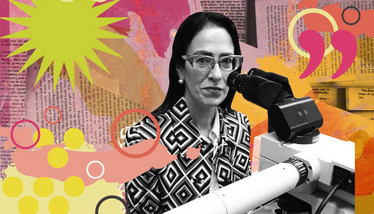
Elizabeth Montgomery
How well do people worldwide accept women as lab directors?
Suraksha Rao B (@suraksharaob)
EM: It depends on the laboratory and the director herself. It may require extra work for a female director to command the same respect as a man; after all, it usually takes time and a demonstration of consistency and capability for a woman to achieve the respect that a man is immediately granted. We all need to teach our sons and daughters to respect leaders, regardless of gender, for the coming generations. These issues are all societal and can only change gradually.
SL: I have never experienced a problem with this in the UK and know many excellent female lab directors. Job descriptions shouldn’t change depending on the gender of the director, so the work should be the same. If there’s pressure on a female director to take on roles not usually done by someone in that post, she needs to be clear from the beginning that those activities are not part of her job description.
MB: In the US and Europe, people are more accepting of woman lab directors. Gender does have some effect, but leadership style has much more.
SP: I think that women are well-accepted as lab directors in many countries, although not universally. In my own experience, the gender of the director does not affect the functioning of subordinates in the lab, particularly if the leadership is appropriate and even-handed.
What impact do you expect the feminization of medical careers will have on the future of our profession?
Stefania Landolfi (@steland011)
EM: The pay will go down, of course. The quality will improve.
SL: Experience in countries and professions where this has already happened suggests that feminization of the workforce reduces its stature and rates of pay, particularly if there are other roles dominated by men. However, it has also led to improvements in working conditions, many of which both men and women enjoy. It is increasingly common for men to work less than full-time, and a good work-life balance is becoming desirable and attainable for all.
In medicine and other professions, women are taking on leadership roles and inequalities are decreasing. As the number of women in senior positions increases, the number of male-dominated jobs will decrease. Our aim must be for women to have the opportunity to work in all professions at all levels, helping us move toward a future where status and pay reflect not the gender of the person in the role, but their contribution and hard work.
MB: There are more women in medical schools. The number of women going into pathology is surpassing men, which will make it easier for the next generation of pathologists to find role models – and for society to accept women as leaders in the field.
SP: I think that feminization is already having a strong positive effect on issues such as work hours, alternative work paths (such as job sharing), and other issues that positively affect work-life balance and the practice of medicine. However, we continue to see erosion of reimbursement and pay despite the relative prestige and high satisfaction value of a career in medicine. Women will need to emphasize the value of this career choice to maintain appropriate pay.
What concrete steps are departments taking to look at female progression and compensation?
Yael Heher (@yaelheher)
EM: I cannot speak for all departments, but ours has studied time to promotion, absolute number of full professors, and transparency around compensation equity – and taken steps to change inequalities. This was probably prompted by laws concerning pay parity rather than by any virtue on anyone’s part. The review was also initiated by women who pointed out the inequalities and pressed the issue. However, in countries without pay parity laws, women have to band together and loudly ask for reviews of such matters. In some places, reviews can be prompted when individuals gather as much data they can, present those data to the administration, and publicly ask for clarification. Not many universities offer job sharing initiatives for anyone, male or female, but most physicians can organize flexible hours on an individual basis working with colleagues.
SP: Many departments are recognizing that women are an essential part of the medical field and are offering more flexibility to meet the demands that childbearing places on a career. Many of our male colleagues are also becoming more interested in work-life balance, helping to bring these issues to the forefront. As competition for high-quality academics of all genders increases, programs are recognizing the need to provide equality and flexibility. I see more and more accommodation for scheduling flexibility, pausing of the “promotion clock” to allow for maternity leave and other issues without penalty, and addressing gaps in pay. Though much work remains to be done, these changes have led to greater numbers of women at higher ranks and leadership positions over the years.
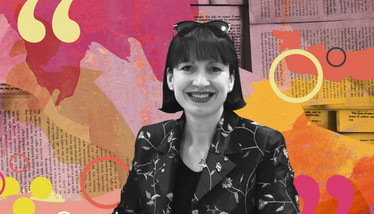
Suzy Lishman
What resources are there to fund and invest in scientists with atypical career tracks – specifically, women taking time off for their small children and then re-entering science?
Liliana H. Mochmann
EM: The reality is that this is still a tough area. In the past, it was a kiss of death to take time off – and it still is if one wholly leaves the workforce when one has small children. Currently, the best approach is to scale back for those diaper years with a supportive PI, but it is still better not to scale back and, instead, to simply endure sleep deprivation for several years and become a master of time management. This is the strategy that my successful female colleagues with grant-funded laboratories and children have used. After all, men don’t take time off, and you are competing with men. Lucky women in science have partners who are fully engaged in child-rearing, but most are not so fortunate.
If you think like the colleagues giving out grant money, you’ll want to fund someone who is always working. That is why, ideally, one should have small children as young as possible – while a student, for example – to be on a level footing once competing for grants as a PI. There is still no real mechanism for taking several years off and being a leader in science. The best strategy is thus to initially link to a supportive lab and never take the plane off the runway to the hangar – even if it needs to sit on the runway for some time before taking off.
MB: Our hospital has a daycare on site. We also have a program that pays for babysitters so that parents can have an evening off or go to work when the kids are off from school.
SP: I think that the emergence of “team science” has helped, but it continues to be difficult to maintain a high-level scientific career and leadership without the extensive support of the institution (helping to bridge funding gaps), extraordinary effort by the woman to maintain continuity and relevance during years away from full-time work, and a degree of luck in funding. I think flexibility is important as your situation changes.
Pregnant pathologists should minimize exposure to chemical and biological agents. How can we safely perform our work in the laboratory?
Marta Garrido (@martiponi)
EM: Take universal precautions extra carefully and do your work in ventilated areas. Doing gross work in a ventilated hood is ideal, as is a mask with a filter. However, it depends on the types of samples you are handling.
MB: The workplace should be willing to accommodate pregnant pathologists by either assigning them duties free of such exposure or providing ways to shield them. Taking care of each other is just as important as taking care of patients.
SP: It is important to make use of all appropriate safety protections and do whatever possible to minimize exposure. If you feel uncomfortable, perhaps working with colleagues to redistribute workloads for a period of time in a fair and equitable manner may help minimize risk.
DK: Workplaces that handle chemical and biological agents should have a safety plan that includes tactics to minimize exposure to hazardous agents. A good safety process will include audits of personnel and procedures when handling hazardous materials to determine compliance and areas of vulnerability to safety. Consult with a safety officer for your organization to discuss your personal situation and any specific concerns in the work environment.

Marilyn Bui
I do not currently have children, but would like to in the future. Could you comment on your experiences with being pregnant while working in the lab and your work-life balance as a mother and a pathologist?
Lacey Durham (@laceydurham)
EM: There is nothing easy about having kids and working, and there is no easy time to do it. The key is a partner who is as engaged in parenting as you are – and if you don’t have that, you just have to push yourself like crazy! However, there is a positive side. You have to get yourself very organized to handle kids and a consuming career. You have to take care of little things immediately; if you don’t, more will appear. Learning this skill makes you ready to be very productive once children become more self-sufficient over time; you become more efficient than those without kids, or those who have someone else to care for their kids. Not allowing yourself to be a “helicopter mother” also helps.
Because there is no great time to have kids, my own view is to do it sooner rather than later. Get the kids out of diapers while you are a medical student or resident – when someone else is still ultimately responsible for the lab or patients – and you will have more time when you become an attending. When you are younger, you can also better handle the sleepless nights with infants. Of course, life does not always make this an option. If you are older, you can better afford household help! No matter what you do, you will work your backside off on all fronts, but become more efficient than most because you have no choice.
MB: It is a privilege, honor, and joy to be a mother. Helping my daughter reach her full potential personally and professionally is my top priority in life. When she was growing up, it was a struggle to balance life and work. As professional women, we need to realize that we may not always be able to have it all. At certain points in your life, work may take precedence; at others, the reverse may be true. Having a strong support network of family, friends, and colleagues is important no matter what stage you are at.
DG: Many of our trainees and young fellows combine working in pathology with motherhood. It seems to work well, but they say they need to be very organized and have assistance. Access to part-time work and training also helps.
SP: Being pregnant while working full-time – and, subsequently, having two small children – was one of the biggest challenges in my career. Having a supportive spouse who shared in household duties and took over when I needed to travel or be at work was really important and is a big part of why I am successful today. I also learned that being perfect both at home and at work was an impossibility; choosing what was most important on each particular day helped to maintain sanity and made sure that neither work nor home efforts became too unbalanced. The ability and willingness to pay others to help was essential, even though finding good people was sometimes a challenge. I also became a master of multitasking and learned to finish jobs and move on, rather than always striving for perfection and never finishing. Although I am really proud of my career, my family and my children remain my biggest and most lasting accomplishments.
How we can reduce the gender pay gap?
Nigar Anjuman Khurram (@NigarAKhurram)
EM: This can only be fixed by speaking up very loudly and en masse. Women are shy about asking for more pay and pointing out disparities. Do it. Ask your male colleagues who are at the same level what they are paid and, if something seems off, point it out to whomever you need to. In countries where such discrimination is not legal, the powers that be may fear legal action and fix it. This happened to me in the early 1990s; I was told by my chairman that I was being paid a lot less than a male colleague with a slimmer CV because I had a husband.
SL: A lot of work is being done in the UK at the moment, led by Professor Dame Jane Dacre, to better understand the gender pay gap in medicine and what can be done about it. An interim report of the review (5) has found that men not only dominate senior positions, they also earn around 17 percent more than women in hospitals and 33 percent more in the community. The difference varies across medical specialties, with women overrepresented in lower-paid specialties. Although not mentioned by name, I would not be surprised if this included pathology. The final report, which will include recommendations to address the gender pay gap, will be published in September 2019 and is eagerly awaited.
MB: Transparency in pay between men and women should be public information. Institutions should have internal policies to bridge this gap. Our institution has a gender-neutral pay scale for faculty that is based on work experience and merit.
DG: I am not aware of such pay disparities in Australia, but they could exist. Most pathologists are employees either in the public or private sector. Public sector wages are usually based on awards that do not differentiate between men and women. More women do work part-time in Australia but, increasingly, men are opting for this too.
SP: One needs to be careful with “average” data, but if a woman is working at the same level as a male colleague, she needs to be vocal and firm in demanding equal pay. One must be sure to have accurate data, but clearly demonstrating equal amounts of work and experience will provide a strong argument for equal pay.
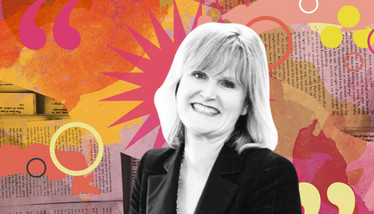
Debra Graves
How can we promote genderblind peer review in pathology journals? Are positive discrimination policies needed to close the existing gap?
Laura G. Pastrián (@DraEosina)
EM: Several pathology journals have initiated blind review without any names or institutions listed. This seems like a great idea to reduce many types of bias, including gender bias. We can all work to promote blind reviews by suggesting this to journal editors we know!
Others may disagree but, in my opinion, affirmative policies directed at gender only serve to hold women back more. In my opinion, such policies legitimize the marginalization of women and create resentment. Sometimes, my institution offers luncheons for female colleagues. To me, these “ladies’ luncheons” suggest that women, for some reason, need “extra help.” We don’t have men’s luncheons – although some might argue that all the important meetings are men’s luncheons! Such events often feature a female speaker on a scientific topic. Just invite her as someone from whom all can learn regardless of gender! No one wants to be invited to speak because of gender rather than skill and talent. The key is spotting the talent and creating opportunities. There are plenty of top tier women we should promote.
SL: I think that current policies should be applied fairly and everyone encouraged to put themselves forward for opportunities when they arise. Women often hold back, thinking that they’re not good enough for a role. We need to get over our impostor syndrome and recognize what we have to offer. Selection panels should be trained in principles of equality and diversity and include independent members.
MB: We should promote review processes in which author information is blind to prevent bias. Similarly, if an institution is recruiting – for example – a new department chair, the committee should include women members and qualified women candidates should be considered.
DG: I do not think positive discrimination is a good idea. Women can achieve without such policies; in fact, I would personally feel uneasy about succeeding as a result of such a policy. I would rather do it on my own merit.
SP: I have never personally found gender discrimination in peer review to be an issue, but with many journals increasingly blinding reviewers as to authorship, it should become less of a potential problem.
What are the experiences of women of color working as clinical laboratory professionals?
Dana Bostic (@ThatLabChick)
EM: My colleagues who are women of color tell me that they are subjected to small, seemingly insignificant indignities on a daily basis. Each individual one is inconsequential, but the sum total becomes really tiresome and annoying. Being mistaken for members of the housekeeping or clerical staff is a recurrent theme. This does not happen to any white male colleagues, but African-American male colleagues are often taken for orderlies and parking attendants (if they are outside), which must be similarly tiresome. As noted above, I am simply mistaken for a secretary and subjected to explanations of topics on which I have ample expertise – and my colleagues of color are doubly treated to the latter, along with other aggravations.
MB: Do not let how society perceives you discourage you. If you are truly an effective leader who is doing the right things for the right reasons, anyone in their right mind will eventually see your value. Otherwise, it is their loss.
DG: Australia is a very multicultural society and we don’t have a lot of problems in relation to this. If there are, appropriate mechanisms should be used to deal with the issue, as it is not something that can be tolerated.
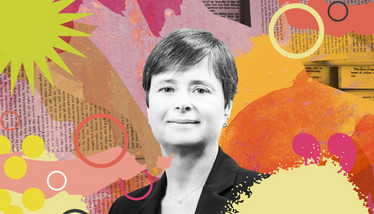
Sherrie Perkins
Many lady doctors in India are given less credibility than their male counterparts – sometimes even called “Sister,” the term for nursing staff. How can we address this?
Hasan Faheema (@histolover)
EM: That happens to a certain extent everywhere, including here in the US, and is one of the indignities that simply will have to change over time. You can only keep introducing yourself as “Doctor X” and politely repeating it and repeating it. If someone calls you “Sister” or “Nurse,” keep saying, “I am Doctor X, your physician. Do you need something from your nurse? I will be happy to find them for you.”
SL: It sounds like this reflects wider issues in society, not just challenges for women in medicine. I would just correct anyone who used the wrong title – but I’m sure it’s more complicated than that!
SP: I was often mistaken for a nurse earlier in my career. I think gentle education as to your position and role, acting the part of physician, and not accepting the stereotype being forced on you are important approaches. However, these cultural stereotypes are difficult to overcome and it is often a long education process for patients, staff, and colleagues.
How can we organize mentorships for women? At the moment, we have to find them for ourselves.
Bamidele Farinre (@bamiprecious)
EM: That is always true, even for men. Some places assign mentors, but that only works if both parties are compatible in the first place. You have to seek advice and people will give it! No one is going to come to you and say, “Please let me help promote your career.” You have to look for colleagues whom you admire and find a way to work with them.
SL: Some organizations do allocate mentors to new appointees but, in my experience, it’s better to select your own. Choosing a mentor is about more than just finding someone doing what you’d like to do in the future; there’s got to be an emotional connection. Organizations should support mentoring by providing training and opportunities for pairs to match up without being proscriptive. I would encourage everyone to find a mentor and not to hesitate to ask someone to take on the role. Most people are pleased to be asked and glad of the opportunity to support others.
MB: Our institution has a Women in Oncology program that pairs mentors with mentees. In that context, I meet with a colleague monthly to discuss issues that are important to professional development. I think this is a great initiative; in fact, my colleague and I actually discussed this and other reader-submitted questions with great enthusiasm. Ours is a two-year-old program, but other institutions have similar arrangements with a much longer history and measurable results.
DG: Mentors are a fantastic resource to assist anybody in their career. Generally, that relationship is something people source themselves but, if seeking a mentor, you can often ask your colleagues, friends, or professional organization to suggest suitable people. At the Royal College of Pathologists of Australasia, we have a mentoring policy and will help our fellows find a suitable mentor if they wish.
SP: I think that the value of having a good mentor is becoming more readily recognized and many institutions are trying to facilitate the process. I have had many mentors over the years, each bringing insight into different aspects of my career ranging from academic success to handling work-life balance to signing out cases efficiently.
My best mentors have not been in formal situations, but have been people who were willing to talk, share experiences, and encourage. I think that being willing to seek and accept advice is the underpinning of great mentorship, but one must realize that one person cannot fulfill all needs, and the amount of effort mentors put in can vary widely. Seeking out a mentor who can give you advice in a specific situation is often much more valuable than an “assigned” person who may not be a good match for your needs.

Diana Kremitske
How can we change the perception that pathology is a good choice for women not because “it is the most compatible with being a physician mom,” but because “it is the most rewarding career path for those who love to teach, mentor, work in a team, and do great medicine?”
Fabienne McClanahan Lucas (@DrFabLucas)
EM: Keep repeating what you just said! Put it all over social media. Tell medical students about it. Be hot stuff yourself!
SL: I think this is a challenge for the specialty in general, and much is being done to address it. We are all aware of the stereotypes surrounding pathology and have heard the comments about “not being proper doctors” or “being nerds with poor communication skills.” We need to highlight the importance of pathology in healthcare and the range of fulfilling careers in the specialty to school students, the general public, other healthcare professionals, and policymakers. The better pathology is understood, the more likely people are to want to join the field because of the fantastic range of opportunities it offers. But I wouldn’t knock the benefits of a good work-life balance for everyone!
MB: We need more successful women pathologists to share their passion and achievements – and the sheer joy of practicing pathology – with medical students to help them make wise career choices.
SP: I think that our actions and the demonstration of what a great career pathology provides are essential. We must stress our importance in patient care and as educators of physicians, rather than content ourselves with coming in and doing our work (often in the basement). This requires a willingness to engage with healthcare teams, serve on committees that include a wide variety of healthcare professionals, and freely offer mentoring to others. Being an active member of a healthcare team and providing value through expertise – not just providing a result – is an excellent way to engage.
- H Levy, “How the gender gap is shifting in medicine, by specialty” (2016). Available at: bit.ly/2jx4W01. Accessed April 9, 2019.
- AD Thor, “Pathology as a profession: does gender matter?” Available at: bit.ly/2WTJVOc. Accessed April 9, 2019.
- E Cox, “Why aren’t more women in health care leadership roles?” (2019). Available at: bit.ly/2AFMOcS. Accessed April 8, 2019.
- LS Rotenstein, “Fixing the gender imbalance in health care leadership” (2018). Available at: bit.ly/2Qma7xw. Accessed April 8, 2019.
- Department of Health and Social Care, “New data on gender pay gap in medicine” (2019). Available at: bit.ly/2v05Y9T. Accessed April 9, 2019.

While obtaining degrees in biology from the University of Alberta and biochemistry from Penn State College of Medicine, I worked as a freelance science and medical writer. I was able to hone my skills in research, presentation and scientific writing by assembling grants and journal articles, speaking at international conferences, and consulting on topics ranging from medical education to comic book science. As much as I’ve enjoyed designing new bacteria and plausible superheroes, though, I’m more pleased than ever to be at Texere, using my writing and editing skills to create great content for a professional audience.








